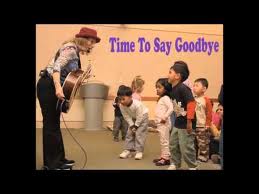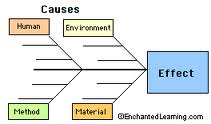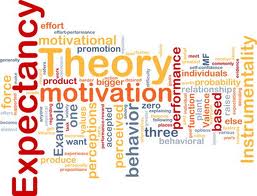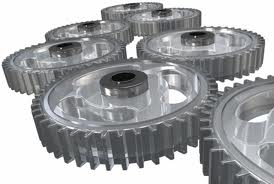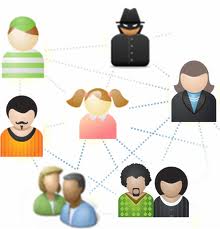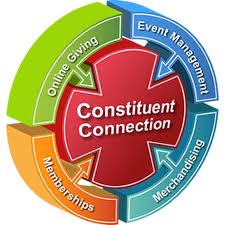Good morning, DonorDreams readers! As many of you know, my work schedule has become challenging in recent months, and I’ve asked a number of “virtual online friends” to help me out with guest blog posts. Today’s post is a Q&A session with Software Advice’s Janna Finch. The topic is focused on electronic donor communications (e.g. solicitations, stewardship activities, etc) and integration of all these things with your other software systems (e.g. donor database, CRM, financial management, etc). I hope you enjoy this morning’s post. Here’s to your health! ~Erik
 There are many ways to ask individuals for donations and support, and not every nonprofit asks in the same way. However, a new report from the fundraising technology advisers at Software Advice indicates that more and more nonprofits are asking for donations through email marketing, and want those marketing tools to integrate with their fundraising database and accounting systems. Nonprofit market researcher and author of the report Janna Finch shares her insights on why nonprofits are seeing software with more functionality, addresses common questions about navigating software selection, and discusses implications for the fundraising space in 2015.
There are many ways to ask individuals for donations and support, and not every nonprofit asks in the same way. However, a new report from the fundraising technology advisers at Software Advice indicates that more and more nonprofits are asking for donations through email marketing, and want those marketing tools to integrate with their fundraising database and accounting systems. Nonprofit market researcher and author of the report Janna Finch shares her insights on why nonprofits are seeing software with more functionality, addresses common questions about navigating software selection, and discusses implications for the fundraising space in 2015.
What was the most striking finding from your survey of nonprofits?
This year, 133 percent more buyers specifically requested built-in email marketing and outreach tools, and I was surprised to see such a large increase. It makes sense that nonprofits are requesting outreach functionality, of course, but this was a significant jump. Retaining existing donors by engaging them and building good relationships with them is a tried-and-true strategy for keeping consistent contributions. It’s good to see that small nonprofits are being proactive about trying to put new systems in place and considering new technology.

In replacing software, the top response was more functionality. What kind of functionality are buyers seeking and why?
Email marketing was by far the most-requested type of functionality at 42 percent, followed by automatic acknowledgements at 35 percent, reporting capabilities at 23 percent, and campaign management features and direct-mail support, both at 22 percent. In my interpretation, this indicates a desire to automate certain processes to be more organized and save time, generating more capacity to focus on furthering the mission of the organization.
Do you have any ideas or theories on what drove the increase in demand for email marketing?
I think that nonprofits understand the value of storytelling and personalized messaging for donors, and are looking for ways to do that more efficiently. It’s incredibly difficult to manage messaging for more than a few dozen donors without some kind of system, and software can make it easier. There are a good number of affordable fundraising systems with email marketing capabilities available today, so it’s hard to imagine why fundraisers wouldn’t want to consider using email-marketing tools.
What are some ways people can determine which fundraising software is best for their nonprofit?
There are three important considerations for nonprofits purchasing fundraising or donor management software—budget, staff/volunteer skill level and the activities you expect it to support. First, set your budget. If you’re not familiar with how fundraising software is priced, then read about total cost of ownership (TCO) so you know what licenses and fees vendors typically charge. Next, assess the technical literacy of everyone who will need to use the system. For example, if a nonprofit has lots of short-term volunteers who use the system, then ease of use should be priority. I also recommend creating a comprehensive list of every activity you want the software to support, few solutions truly “do it all,” and it can be helpful to prioritize the list into “need-to-have” and “like-to-have” categories.
What are the implications of the trends you identified for the fundraising tech space?
We see a trend of fundraising, donor management and CRM systems naturally morphing into a single system that supports all types of interactions with constituents and fundraising activities. There is overlap in what these systems do and how people use them, so it makes sense that this is happening. Hopefully these more comprehensive systems can make it easier for small nonprofits to amplify their message, better organize and protect their data, and promote long lasting relationships with donors and supporters.
You can read the full report here: Fundraising and Donor Management Software BuyerView | 2015

 In recent months, I’ve been reminded of the power of donor databases and Customer Relationship Management (CRM) systems. For-profit corporations grasped the importance of gathering customer data a long time ago, which is why they invested in these systems before many non-profit organizations started doing so. I will divide the remainder of this blog post up into sections and share a few personal stories about my experiences in recent months. At the end of this post, I’ll share a few resources to help you with your search.
In recent months, I’ve been reminded of the power of donor databases and Customer Relationship Management (CRM) systems. For-profit corporations grasped the importance of gathering customer data a long time ago, which is why they invested in these systems before many non-profit organizations started doing so. I will divide the remainder of this blog post up into sections and share a few personal stories about my experiences in recent months. At the end of this post, I’ll share a few resources to help you with your search.![IMG_20150414_215128628[1]](https://donordreams.files.wordpress.com/2015/06/img_20150414_2151286281.jpg?w=169) My husband and I like to take cruises every other year and visit fun places. Over the years we’ve traveled to the Caribbean, Greek Islands, Scandinavian peninsula (and St. Petersburg, Russia), Alaska, and recently the Panama Canal (and Central America).
My husband and I like to take cruises every other year and visit fun places. Over the years we’ve traveled to the Caribbean, Greek Islands, Scandinavian peninsula (and St. Petersburg, Russia), Alaska, and recently the Panama Canal (and Central America).![IMG_20150414_191147999_HDR[1]](https://donordreams.files.wordpress.com/2015/06/img_20150414_191147999_hdr1.jpg?w=300) While some people think this level of interaction is creepy, I believe the vast major of people (including myself) find this comforting and convenient. I prefer to think of it differently. I’m in a 10 year relationship with Princess Cruises, and they better know my preferences just like my husband better know my eye color.
While some people think this level of interaction is creepy, I believe the vast major of people (including myself) find this comforting and convenient. I prefer to think of it differently. I’m in a 10 year relationship with Princess Cruises, and they better know my preferences just like my husband better know my eye color. When I returned from my cruise at the end of April, I immediately hit the road on a business trip. Whenever I visit this one particular client, I always stay at the same hotel — Marriott SpringHill Suites.
When I returned from my cruise at the end of April, I immediately hit the road on a business trip. Whenever I visit this one particular client, I always stay at the same hotel — Marriott SpringHill Suites. One of my many jobs in this world is being the webmaster and community manager for a large national organization’s resource development website, which essentially acts as a fundraising toolbox for their local affiliates. One of the many functions of the website is an “Ask the Expert” service where front line staff can ask resource development questions and receive an answer in approximately 24 hours. A few weeks ago a question was asked about donor databases and QuickBooks Online. While I’m happy with our answer, I’m wondering if there isn’t more advice that could’ve been provided.
One of my many jobs in this world is being the webmaster and community manager for a large national organization’s resource development website, which essentially acts as a fundraising toolbox for their local affiliates. One of the many functions of the website is an “Ask the Expert” service where front line staff can ask resource development questions and receive an answer in approximately 24 hours. A few weeks ago a question was asked about donor databases and QuickBooks Online. While I’m happy with our answer, I’m wondering if there isn’t more advice that could’ve been provided.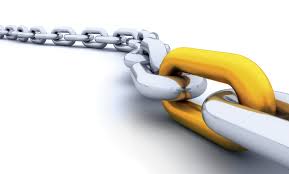 OK . . . you’ve had a chance to read the question and answer. What additional advice would you have provided? Do you use QuickBooks Online and a donor database with a data integration bridge? If so, what can you tell us about the data bridge and the database (or CRM)?
OK . . . you’ve had a chance to read the question and answer. What additional advice would you have provided? Do you use QuickBooks Online and a donor database with a data integration bridge? If so, what can you tell us about the data bridge and the database (or CRM)?
